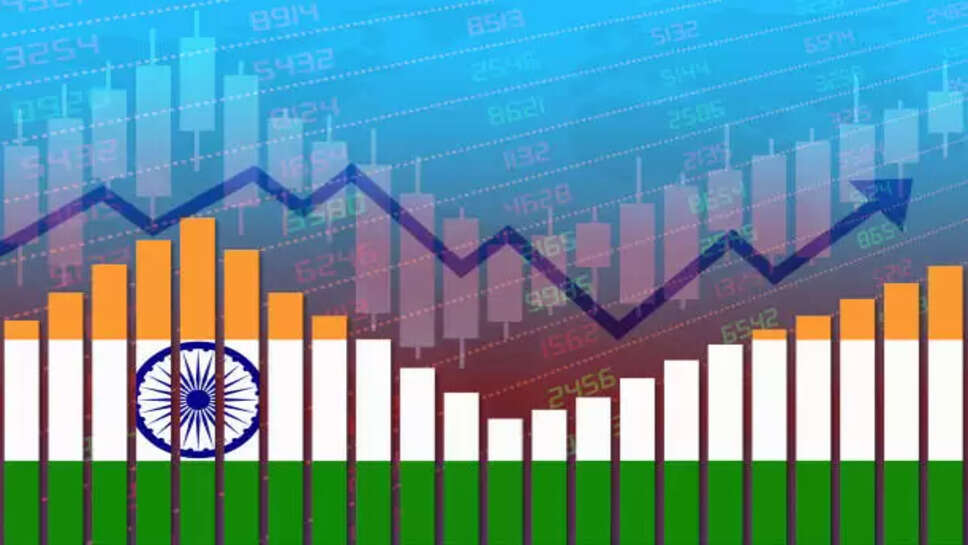Indian Stock Market Sinks Over 1.5% on Escalating Middle East Tensions

India’s stock markets began the day under heavy pressure, opening sharply lower as global geopolitical worries rattled investors. Both the benchmark Sensex and Nifty 50 dropped more than 1.5% in early trade, weighed down by fresh tensions in the Middle East—specifically renewed confrontations between Israel and Iran. Against a backdrop of heightened risk aversion, traders exited equities in favor of haven assets, while domestic factors and corporate updates added fuel to the volatility.
🌀 Global Turbulence and Risk Sentiment
In the background loomed reports of military activity and protracted exchanges between Israel and Iran. Recent escalations—air strikes, drone interceptions, and harrowing rhetoric—have elevated fears of a broader conflict. With oil prices spiking and analysts flagging threats to global trade routes and energy supplies, investor sentiment soured swiftly.
Traditionally, geopolitical risks prompt a flight to safety—U.S. treasuries, gold, and the Japanese yen. Equities, especially those sensitive to global uncertainty, tend to take a beating. That’s precisely what materialized: benchmark indices tanked at the open, with widespread red in sectors such as banks, energy, and automobiles.
📉 Market Snapshot
-
Sensex slid over 1.6%, retracing gains from the past week.
-
Nifty 50 followed suit, falling more than 1.5%.
-
Mid and smallcap indices also plunged—some breaching the 2% mark—as sell-offs broadened.
For many traders, the early plunge erased recent gains, signalling risk-off sentiment and renewed sell pressure.
🏦 Sectoral Impact
1. Banking & Financials
Financials led the downward shift: banks fell uniformly by 2–2.5%. With regional risk rising, lenders' overseas exposure came under scrutiny. Investors scaled back positions amid fears of disrupted remittances, loan defaults, and currency volatility.
2. Energy Stocks
Oil & gas companies exhibited mixed swings. While elevated crude prices could boost margins, concerns about potential shipping route disruptions and volatility in Middle East energy production triggered pre-emptive selling.
3. Pharma & IT
These defensive sectors outperformed today’s indices. With business fundamentals relatively insulated, they attracted safe-money flows. Large-cap blue-chips saw boosts, narrowing losses across the board.
4. Auto & Capital Goods
Auto majors declined sharply as consumer sentiment took a hit. Pending export orders also came under fresh scrutiny amid fears of supply chain disruptions and rising commodity costs.
✍️ Domestic Factors at Play
Besides global triggers, a series of domestic developments influenced trading dynamics:
-
Interest rate caution: Market participants recalibrated earnings and valuations based on mixed signals from the Reserve Bank of India.
-
Industrial output data: Latest factory numbers came below expectation, reinforcing conservative GDP outlooks.
-
Corporate earnings season: Q1 results have been steady but underwhelming, limiting upward momentum and amplifying risk aversion.
These local headwinds added pressure, causing even short-term traders and FIIs to either cash out or hedge portfolios.
📈 The Flow of Funds
-
Foreign Institutional Investors (FIIs) were selling heavily, reversing recent inflows. Global risk aversion spurred capital rebalancing and repatriation to safer markets.
-
Domestic investors echoed the cautious tone; mutual funds, PMS, and retail players favored short-duration fixed income due to heightened uncertainty.
Both these patterns signal persistent volatility ahead, with investors reluctant to take fresh equity exposure until stability returns.
👥 What Traders Are Saying
-
“Markets cannot look past a major Middle East event,” said one domestic equity strategist, noting the outsized impact of geopolitical tensions on sentiment.
-
Options market indicators suggest higher VIX levels in the near term, pointing to expectations for volatility—possibly above the 18–20% mark.
-
Most traders are advising a cautious stance, waiting for data confirmation and a clearer signal on geopolitical developments.
💡 Support Zones and Technical Analysis
From a technical lens, analysts are tracking critical support levels:
-
Sensex support lies between 68,500–69,000. A breakdown here could signal deeper pullbacks.
-
For the Nifty 50, the 20,600–20,700 zone is seen as the next cushion point. A breach could lead to declines toward 20,300.
Longer-term investors are keeping an eye on the 21,200–21,300 zone—a confluence of recent highs and Fibonacci retracement levels. Above that, a measured bounce is possible if volatility subsides.
🔍 What’s Next Ahead?
1. Geopolitical Developments
Any official statement from Israel, Iran, or major powers (like the U.S.) could alter markets dramatically. Even minor military escalations or diplomatic signals could trigger sharp market responses.
2. Global Commodity Prices
Oil, gold, silver, and base metals—all are tied to global risk sentiment. Rising oil prices, in particular, will influence inflation and fiscal projections.
3. Moody’s-S&P Analysis
Global ratings agencies will closely watch oil impact on inflation, Indian external finances, and corporate profitability—potentially altering outlooks and growth assumptions.
4. Upcoming Data Points
Upcoming GDP estimates, CPI/PPI inflation reports, and fiscal updates could either reinforce or temper current risk-off positioning.
🧭 How Investors Can Navigate
-
Risk management: Avoid large directional bets during heightened volatility. Consider hedging using index futures or options strategies like long straddles or risk reversals.
-
Trim exposure: Assess and reduce positions in cyclical sectors and those exposed to global uncertainties.
-
Shift to defensives: Rebalance portfolios toward stable sectors—utilities, FMCG, staples—that often outperform during turbulent times.
-
Focus on quality: Blue-chip companies with strong balance sheets, consistent cash flows, and diversified businesses tend to offer resilience.
A Risk-Off Opening That Demands Vigilance
The sharp early decline in India’s markets—Sensex and Nifty both plunging over 1.5%—reflects a classic risk-off response amid rising Middle East tensions. With bank stocks, energy, and auto sectors under selling pressure, the broader market took a breather after recent upward trends.
Going forward, traders and investors will be watching geopolitical developments, commodity movements, and domestic data, evaluating whether a deeper correction is unfolding or if this drop is a buying opportunity for the resilient narratives in India’s growth story.
For now, though, caution is the watchword. With global uncertainty elevated, India’s markets may fluctuate sharply—punctuated by headlines, data releases, and shifts in investor sentiment.
.jpg)